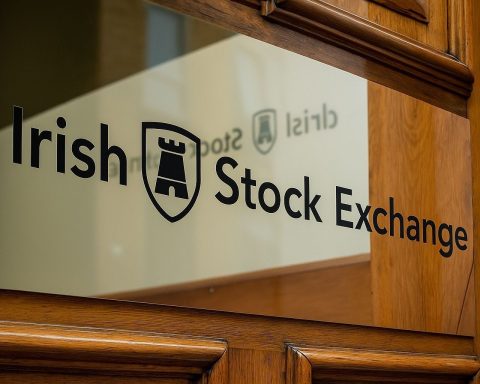Sydney, Australia – 18 November 2025
Key points
- The S&P/ASX 200 ended Monday 17 November almost unchanged at 8,636.4 points, up just 0.02%, after recovering from early losses of around 0.5%. The broader All Ordinaries added about 0.1%. [1]
- The index is still hovering near a four‑month low and remains more than 5% below its late‑October record high, despite breaking a four‑day losing streak. [2]
- Financials dragged as Commonwealth Bank slipped another ~1% and Macquarie fell 2.3% ex‑dividend, while ANZ and Westpac eked out gains. [3]
- Energy, technology and property led the rebound, with Ampol and Viva Energy up more than 3% and rare‑earth stocks including Lynas and Iluka jumping around 5–6%. [4]
- Short‑seller drama continued: IperionX slid about 3% after a volatile session following a critical report, while DroneShield surged around 11% as it bounced back from earlier short‑selling pressure. [5]
- BHP fell roughly 0.6% as investors digested a landmark UK court decision finding the miner liable for Brazil’s 2015 Samarco dam disaster, raising questions over future damages and provisions. [6]
- Rate‑cut expectations eased further, with swaps now implying only around a one‑third chance of an RBA cut by May, while markets look ahead to RBA minutes, delayed US data and Nvidia’s earnings later this week. [7]
This article is for general information only and does not constitute financial or investment advice.
A volatile Monday ends flat – but still painful for the ASX 200
On Monday 17 November 2025, the Australian stock market staged an afternoon comeback that just managed to halt its worst losing streak since June. The S&P/ASX 200 finished at 8,636.4 points, up a barely noticeable 1.9 points, or 0.02%, while the All Ordinaries gained 8.7 points (0.1%). [8]
The index had been down by as much as around 45–50 points in early trading, as investors continued to react to last week’s tech‑led global sell‑off and domestic worries around bank earnings and interest‑rate policy. Dip‑buyers eventually stepped in, turning the day from another sharp fall into a flat close. [9]
Context still matters, though. Friday’s 1.4% drop left the ASX 200 at its lowest level in roughly 50 days and capped four consecutive daily declines and a third straight week of losses, even though the benchmark remains about 5% higher year‑to‑date. Monday’s session merely stabilised the index at around the same level, near its weakest closing point since mid‑July and more than 5% below the all‑time high near 9,115 points set on 21 October. [10]
Banks and financials remain the main drag
If the Australian stock market felt heavy on Monday, the financial sector was a big reason why.
A Reuters‑based summary of the session noted that the financials index edged lower by about 0.2%, closing near a four‑month low, as renewed selling hit major banks. [11]
- Commonwealth Bank of Australia (CBA) shed roughly 1% and is now down more than 10% since early last week following a subdued earnings update that highlighted cost pressures and margin squeeze. [12]
- Macquarie Group slid around 2.3% as its shares traded ex‑dividend, extending a double‑digit pullback following weaker‑than‑expected results. [13]
- By contrast, ANZ and Westpac both rose around 0.5–0.6%, while NAB finished roughly flat, as some analysts increasingly favour these names on valuation grounds over CBA and Macquarie. [14]
With CBA alone representing more than 10% of the ASX 200, persistent weakness in the stock has outsized impact on the index and has been a key feature of recent declines. [15]
Rate‑cut hopes fade as RBA minutes loom
The pressure on bank shares is occurring against a shifting interest‑rate backdrop. A Reuters report cited traders marking down expectations for near‑term policy easing, with interest‑rate swaps now showing roughly a 36% probability of a Reserve Bank of Australia rate cut by May, compared with about 70% a week earlier. [16]
Separately, the ASX’s own rate tracker suggests only single‑digit odds of a cut at the RBA’s December meeting, while the market waits for minutes from the 5 November policy meeting, due today (18 November), for clues on how much easing room policymakers believe they have left. [17]
Adding to the debate, HSBC’s chief Australian economist Paul Bloxham argued on Monday that the RBA might already have cut rates too far, pointing to higher‑than‑expected underlying inflation, stronger jobs growth, rising house prices and a bounce in consumer sentiment. He even suggested that the next move could be up, not down, although not until around 2027, if the economy continues to run hotter than expected. [18]
This shift in rate expectations is a double‑edged sword for equities:
- It supports banks’ net interest margins over the long run,
- But reduces the appeal of high‑valuation growth stocks and rate‑sensitive sectors like property in the short term, and
- Keeps volatility elevated as investors constantly reassess the likely path of policy.
Energy, tech and property lead a tactical rebound
Despite ongoing worries around banks and rates, seven of the ASX’s eleven sectors finished higher on Monday, according to local market commentary. [19]
The standout winners were:
- Energy – up about 1.1%, its strongest one‑day rise in around a week. Ampol climbed roughly 3.8%, while Viva Energy gained more than 3%, and heavyweight Woodside Energy added close to 1% amid reports it is lining up a US LNG supply deal with Saudi Aramco. Uranium and coal names also firmed. [20]
- Information Technology – gained around 1.2%, recovering some of last week’s heavy selling as investors cautiously tip‑toed back into growth names ahead of Nvidia’s earnings later this week. [21]
- Property / A‑REITs – rose roughly 0.6%, helped by Charter Hall, which rallied after signing Bank of Queensland as a long‑term tenant for a new Brisbane tower – a deal seen as a positive signal for office leasing demand. [22]
On the downside, healthcare, utilities and gold miners slipped, with gold‑linked stocks falling more than 2% as bullion prices eased and traders took profits after a strong run. [23]
Overall, Monday’s sector performance suggests a modest rotation away from crowded bank trades toward energy, tech and property, but not yet the kind of broad‑based buying that would signal a convincing bottom.
Rare‑earths and defence: winners in the volatility
Two areas of the market that stood out were rare‑earth miners and defence‑tech names.
According to both ABC and Investing.com data, Lynas Rare Earths and Iluka Resources jumped roughly 5–6%, while broader rare‑earth plays such as Arafura also posted strong gains. [24]
Investing.com’s session summary listed DroneShield as the top performer on the ASX 200, surging around 11%, clawing back losses after being targeted by a short‑seller last week. [25]
This combination – critical minerals plus defence technology – continues to attract attention from investors looking for exposure to geopolitical themes, electric‑vehicle supply chains and heightened defence spending.
Short‑seller spotlight: IperionX under pressure
If DroneShield was Monday’s comeback kid, IperionX remained firmly in the hot seat.
Shares in the titanium and critical minerals group resumed trading after a two‑day halt following a detailed short‑seller report from Spruce Point Capital, which accused the company of accounting and disclosure issues. IperionX rejected the claims, saying its financial statements comply with Australian standards. [26]
The stock chart was a rollercoaster:
- At one point the price plunged around 24% intraday compared to last Wednesday’s close.
- Buyers then stepped in, helping the share price recover much of the loss, but
- IperionX still finished the day down about 3% at $5.44 – a three‑month low. [27]
The episode underlines how short‑seller activity is becoming a more frequent catalyst for sharp moves on the ASX, particularly in high‑growth, story‑driven names in the tech and critical‑minerals space.
BHP slips as UK court ruling adds to legal overhang
In the heavyweight mining sector, Rio Tinto and Fortescue rose around 0.6% and 1.1% respectively, but BHP fell roughly 0.6%, underperforming peers. [28]
The weakness follows a landmark ruling by the High Court in London, which late last week found BHP legally liable under Brazilian environmental law for the 2015 Fundão dam collapse at the Samarco mine, described as Brazil’s worst environmental disaster. The decision opens the door to significant compensation claims, with estimates of potential exposure running into tens of billions of pounds, although BHP has already contributed substantial sums to remediation and says it will appeal. [29]
For investors, the ruling heightens legal and ESG risk around the stock and the broader mining sector, at a time when commodity demand is already under scrutiny due to slowing Chinese fixed‑asset investment and rising iron‑ore stockpiles. [30]
Macro backdrop: Aussie dollar softer, gold and oil ease
The Australian dollar traded just above US$0.65, down a touch from Friday’s close, as investors scaled back expectations of further RBA easing and weighed global risk sentiment. [31]
According to ABC’s late‑afternoon snapshot and Investing.com commodity data:
- Gold futures slipped close to 1%, extending a modest pullback after a strong multi‑month rally. [32]
- Brent crude dipped around 1%, despite Monday’s strength in local energy shares, as markets digested updated OPEC forecasts and concerns about future oversupply. [33]
- The local volatility index (S&P/ASX 200 VIX) fell to roughly 12.2, signalling that, for now, investors are still willing to look through the recent correction rather than hedge aggressively. [34]
Globally, equities remain focused on delayed US economic data following the recent government shutdown and on Nvidia’s upcoming earnings, seen as a key test for the durability of the AI‑driven tech rally. [35]
What to watch on 18 November 2025
As the market digests Monday’s flat close, investors will be watching several catalysts today and later in the week:
- RBA November minutes
- Any hint that the Board is more worried about sticky inflation than weak growth could further dampen rate‑cut expectations, supporting the Australian dollar while pressuring rate‑sensitive sectors. [36]
- BHP’s response to the UK ruling
- Clarity on potential provisions or legal strategy could influence sentiment across the entire resources complex, given the precedent‑setting nature of the case. [37]
- Ongoing fallout from short‑seller activity
- Both IperionX and DroneShield are likely to remain volatile as investors reassess fundamentals relative to the claims and counter‑arguments now in the public domain. [38]
- Global risk appetite
- With US data releases still catching up and Nvidia in focus, moves on Wall Street could drive the next big leg for the ASX 200, particularly across tech, miners and financials. [39]
Bottom line for investors
The Australian stock market on 17 November 2025 delivered more relief than celebration. A flat close at 8,636.4halted a multi‑day slide but left the benchmark parked near a four‑month low, with banks under pressure, legal risks clouding BHP, and rate‑cut hopes fading. [40]
At the same time, pockets of strength in energy, tech, property and rare‑earths show that investors are still willing to back selective growth and thematic stories – especially where earnings momentum or structural tailwinds remain intact. [41]
For anyone following the ASX today (18 November 2025), the message is clear:
- Macro and policy signals (RBA and Fed) are driving the big picture.
- Stock‑specific stories – from short‑seller battles to landmark legal rulings – are dictating the winners and losers on any given day.
- Volatility is likely to stay elevated, but so are opportunities for investors who stay diversified and focused on fundamentals, rather than short‑term noise.
Again, this is not financial advice – just a snapshot of how the Australian sharemarket is navigating a complicated mix of global uncertainty, shifting rate expectations and stock‑specific shocks.
References
1. www.morningstar.com.au, 2. www.morningstar.com.au, 3. www.morningstar.com.au, 4. www.morningstar.com.au, 5. www.morningstar.com.au, 6. www.abc.net.au, 7. www.indopremier.com, 8. www.morningstar.com.au, 9. www.morningstar.com.au, 10. insideadviser.com.au, 11. www.indopremier.com, 12. www.morningstar.com.au, 13. www.indopremier.com, 14. www.indopremier.com, 15. insideadviser.com.au, 16. www.indopremier.com, 17. www.morningstar.com.au, 18. www.abc.net.au, 19. australianmarketreport.wordpress.com, 20. www.morningstar.com.au, 21. australianmarketreport.wordpress.com, 22. www.abc.net.au, 23. australianmarketreport.wordpress.com, 24. www.abc.net.au, 25. m.investing.com, 26. www.morningstar.com.au, 27. www.morningstar.com.au, 28. www.morningstar.com.au, 29. www.theguardian.com, 30. www.abc.net.au, 31. www.abc.net.au, 32. m.investing.com, 33. m.investing.com, 34. m.investing.com, 35. insideadviser.com.au, 36. www.morningstar.com.au, 37. www.theguardian.com, 38. www.morningstar.com.au, 39. insideadviser.com.au, 40. www.morningstar.com.au, 41. www.morningstar.com.au










